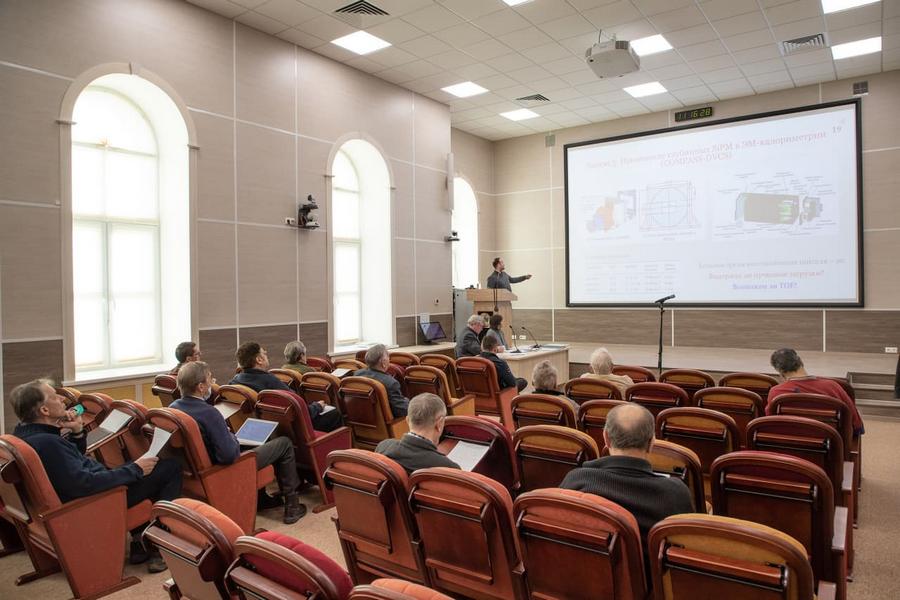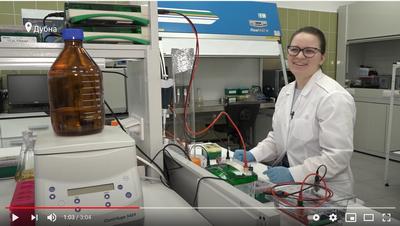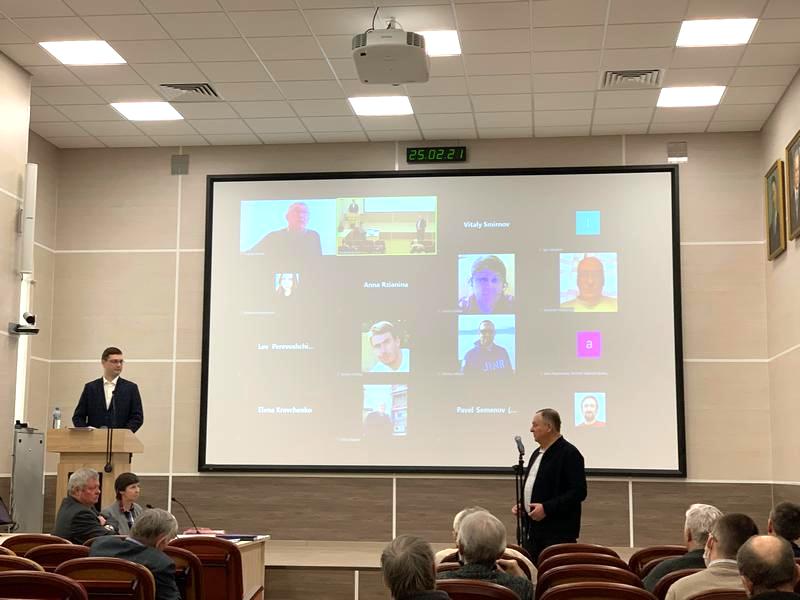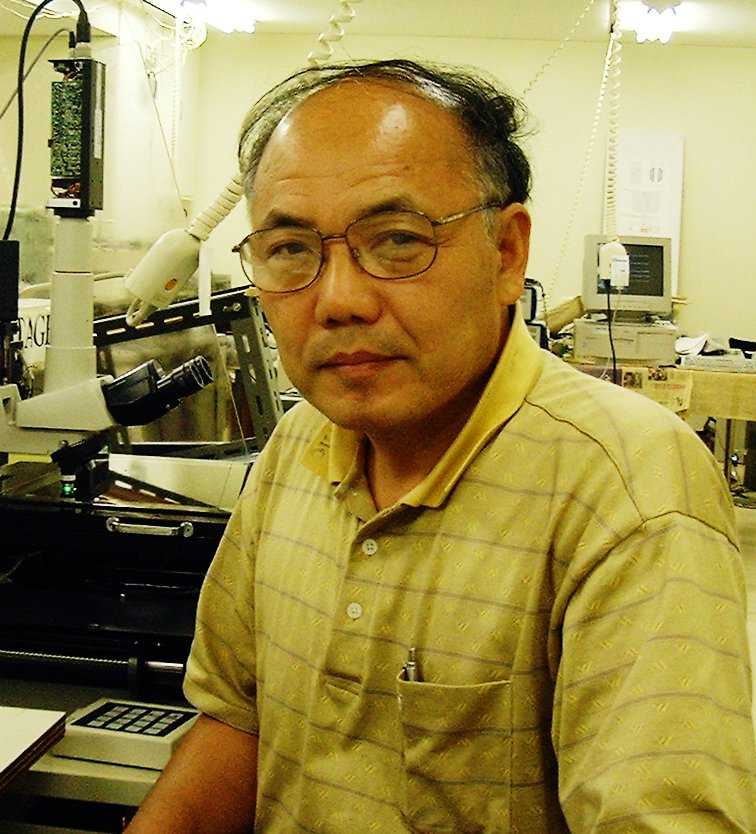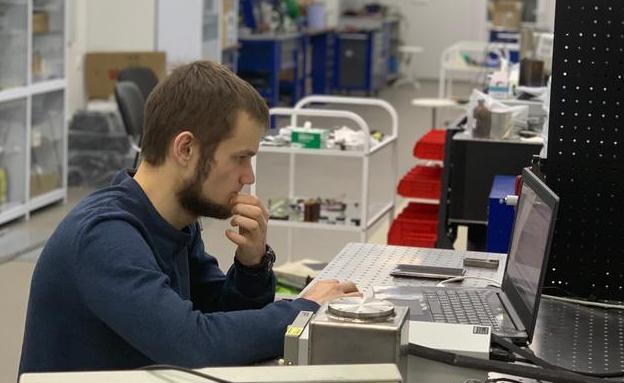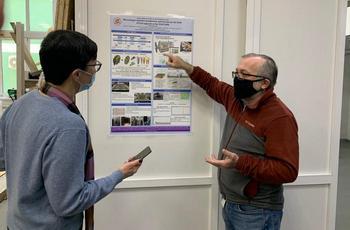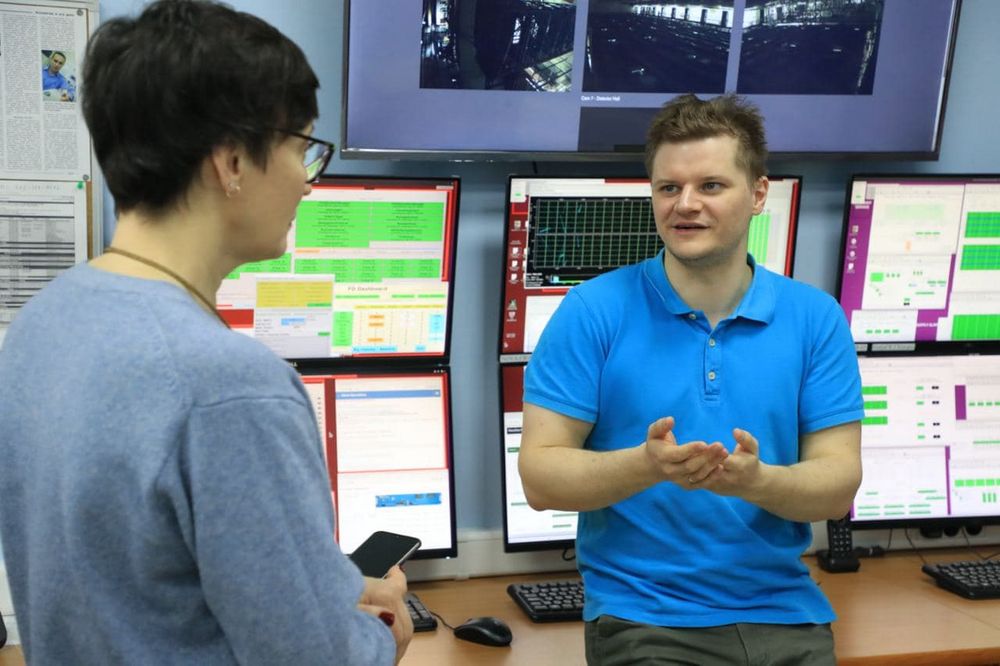News
04.03.2021
On 4 March 2021, at the session of the DLNP Dissertation Council, Nikolay Vladimirovich Anfimov defended the dissertation “Development and application of methods for studying photodetectors” for the degree of the Candidate of Physics and Mathematics in Specialty 01.04.01: Instruments and methods of experimental physics.
Our congratulations to Nikolay on the successful defence of the candidate dissertation! We wish you further scientific achievements!
03.03.2021
On 18−19 February 2021, at the 129th session of the JINR Scientific Council, annual JINR Prizes were awarded for the best scientific, methodological and technological applied works. The First Prize in the category “Experimental Research Works” went to the team of scientists from our Laboratory—the GERDA experiment group—for a series of papers “No-background search for the neutrinoless double beta decay of Ge-76 in the GERDA experiment” authored by K. N. Gusev, I. V. Zhitnikov, D. R. Zinatulina, A. A. Klimenko, A. V. Lubashevsky, N. S. Rumyantseva, A. A. Smolnikov, M. V. Fomina, E. A. Shevchik and M. V. Shirchenko.
03.03.2021
TV channel 360˚ shot a video about the patent for the invention “Method for determining genetic predisposition to human longevity” recently received by JINR. The authors are Elena Vladimirovna Kravchenko and Anastasia Evgenevna Ivanova from the DLNP Molecular Genetics Group.
26.02.2021
On 25 February 2021, at the session of the DLNP Dissertation Council, Nikolay Vasilevich Atanov defended the dissertation “Front-end electronics and photosensors for the electromagnetic calorimeter of the Mu2e experiment” for the degree of the Candidate of Physics and Mathematics in Specialty 01.04.01: Instruments and methods of experimental physics.
Our congratulations to Nikolay on the successful defence of the candidate dissertation! We wish you further scientific achievements!
26.02.2021
On 25 February 2021, at the session of the DLNP Dissertation Council, Konstantin Nikolaevich Shipulin defended the dissertation “Software and hardware design for planning and quality assurance of conformal proton beam therapy” for the degree of the Candidate of Physics and Mathematics in Specialty 01.04.01: Instruments and methods of experimental physics.
Our congratulations to Konstantin on the successful defence of the candidate dissertation! We wish you further scientific achievements!
25.02.2021
Photo from jinr.ruAt the 129th session held on 18−19 February in Dubna, the JINR Scientific Council approved the decision of the International Jury to award the 2020 Bruno Pontecorvo Prize to Professor NIWA Kimio (Nagoya University, Japan) for the development of the high-resolution nuclear emulsion technique, which led to identification of the tau neutrino and direct observation of tau neutrino oscillations.
25.02.2021
The JINR Department of Licensing and Intellectual Property announces that on 29 January 2021, the Joint Institute for Nuclear Research received the patent for the invention “Method for determining genetic predisposition to human longevity”. The authors are Elena Vladimirovna Kravchenko and Anastasia Evgenevna Ivanova.
25.02.2021
We continue telling you about our visit to the DLNP Metrology Laboratory.
Applications of a precision laser inclinometer, developed by scientists from the Section of Laser Metrology of the DLNP Experimental Department of Multiple Hadronic Processes, are quite diverse. We already wrote how the device is used in physical mega-science facilities—colliders and gravitational telescopes.
24.02.2021
The DLNP Group of Scientific Communication visited Section 3 of Proton−Antiproton Interactions of the Experimental Department of Colliding Beams at DLNP.
This March, the Section will complete manufacturing Micromegas detectors for new small wheels (NSWs) of the muon spectrometer of the ATLAS experiment at the Large Hadron Collider (LHC) according to the LHC Phase 1 upgrade.
19.02.2021
The profession of a typist, “a person who is employed for typing” (a dictionary entry), became a thing of the past. Although typists type fast (and in this sense they could be needed even today), they were replaced by speech recognition software which operates faster.
18.02.2021
Dmitry Naumov was shortly interviewed by Channel 5 about the BAIKAL-GVD project.
“Next exceptional steps of humankind in space are unthinkable without fundamental science. Novel devices, technologies, equipment and the very space race start with calculations and experiments in laboratories and scientific centres”, the presenter says.
11.02.2021
The DLNP Group of Scientific Communication visited the Remote Operation Center (ROC-Dubna) of NOvA, a long-baseline neutrino experiment studying neutrino oscillations when a shaped particle beam is sent to the Far Detector located 810 km away from the source.


